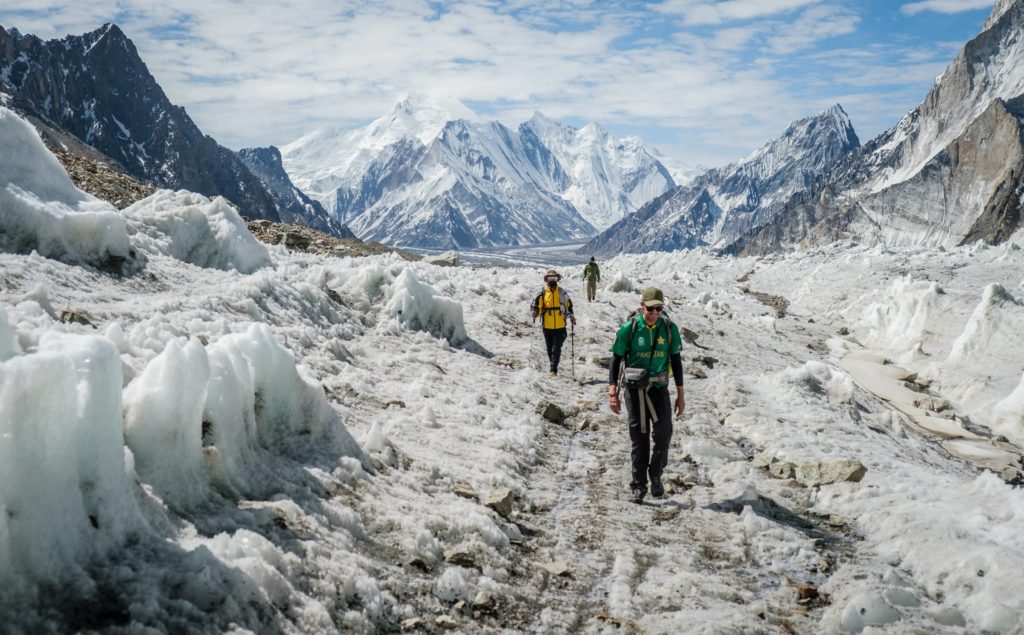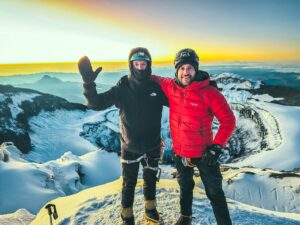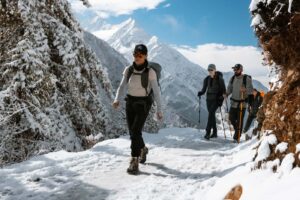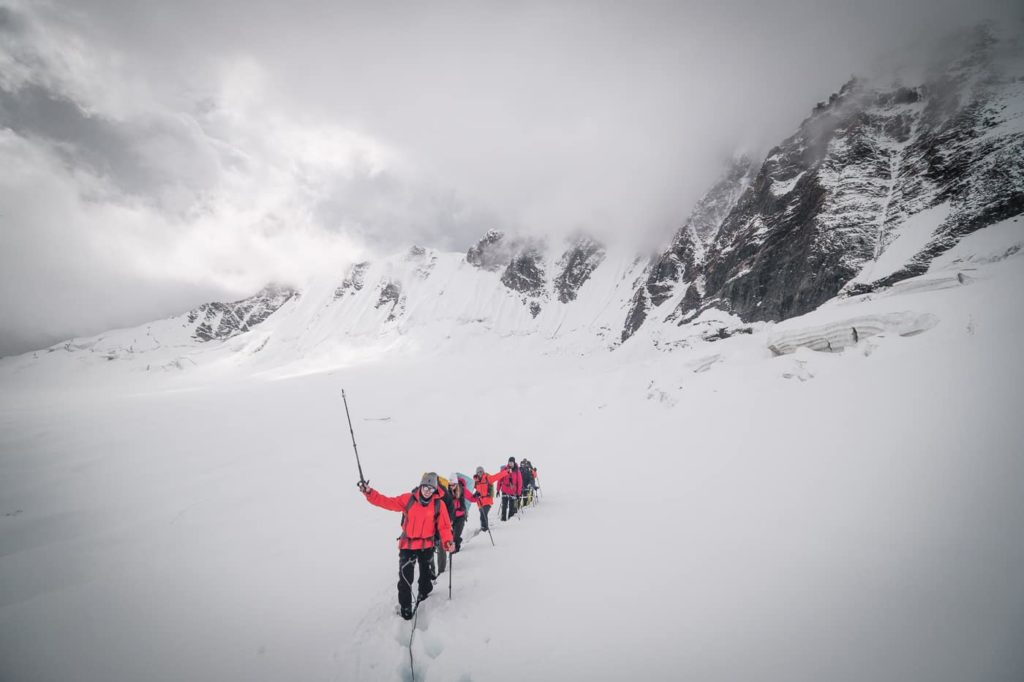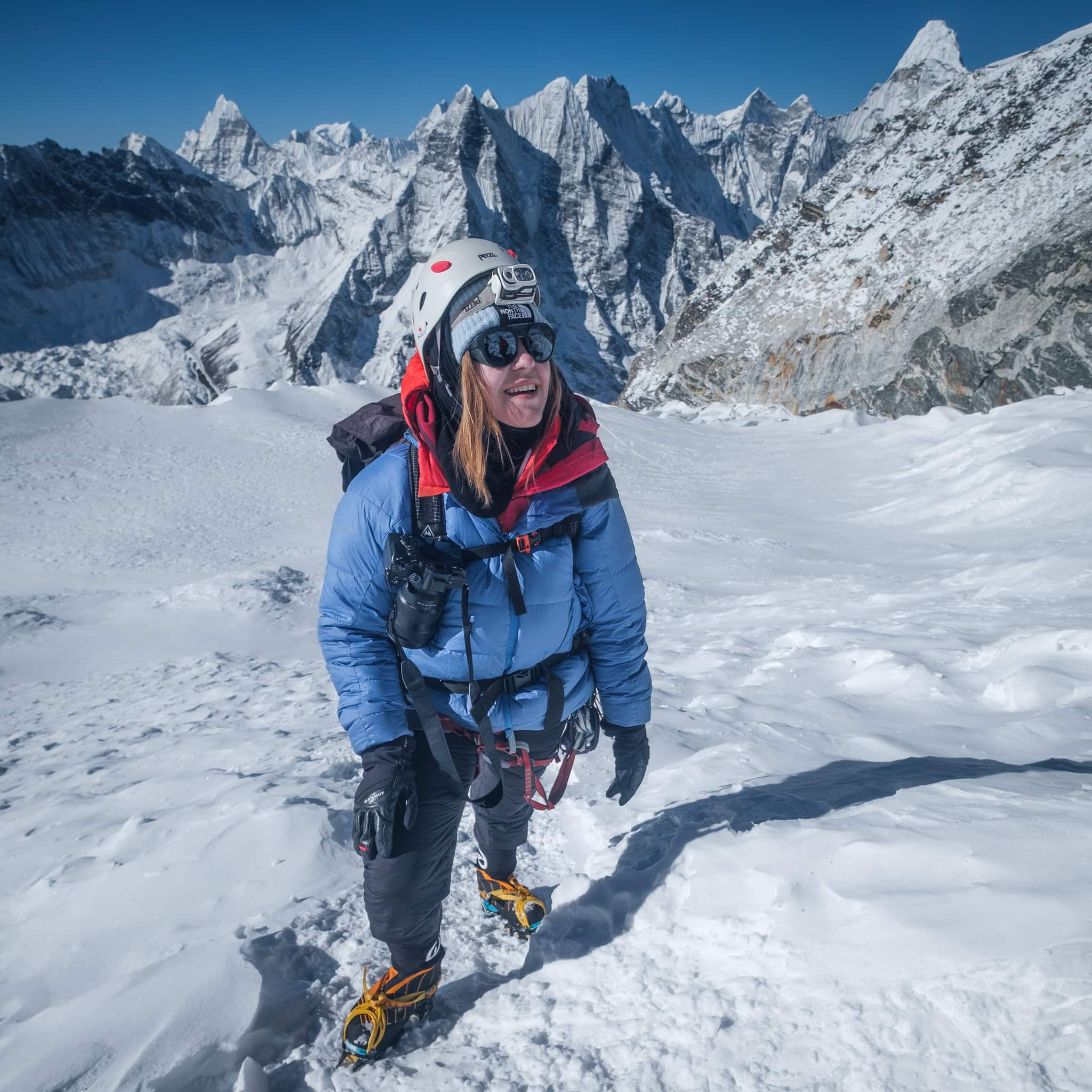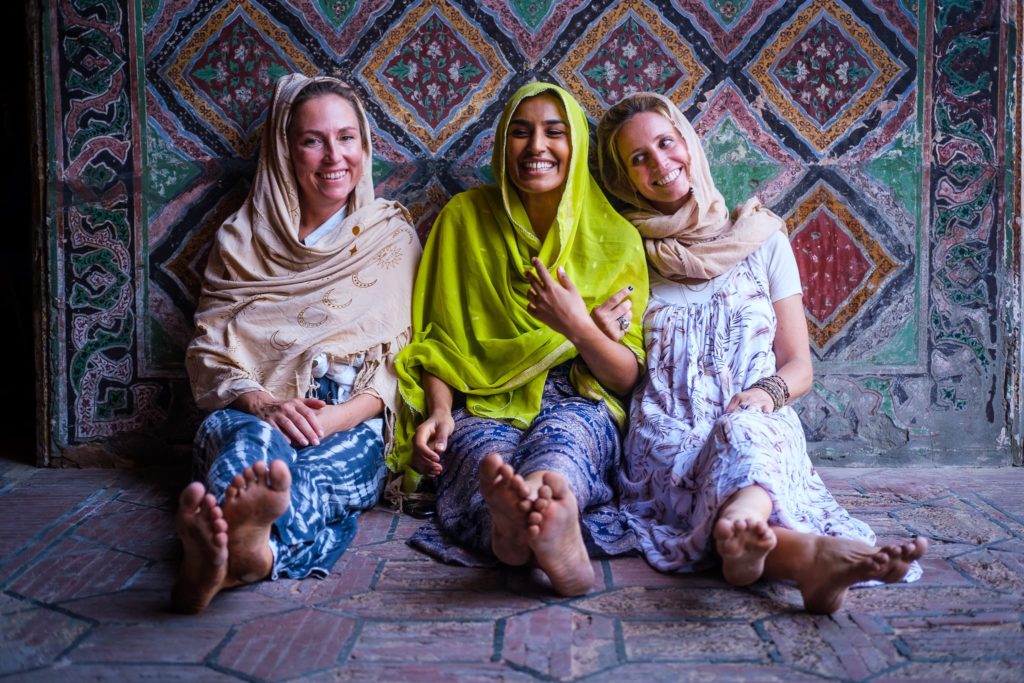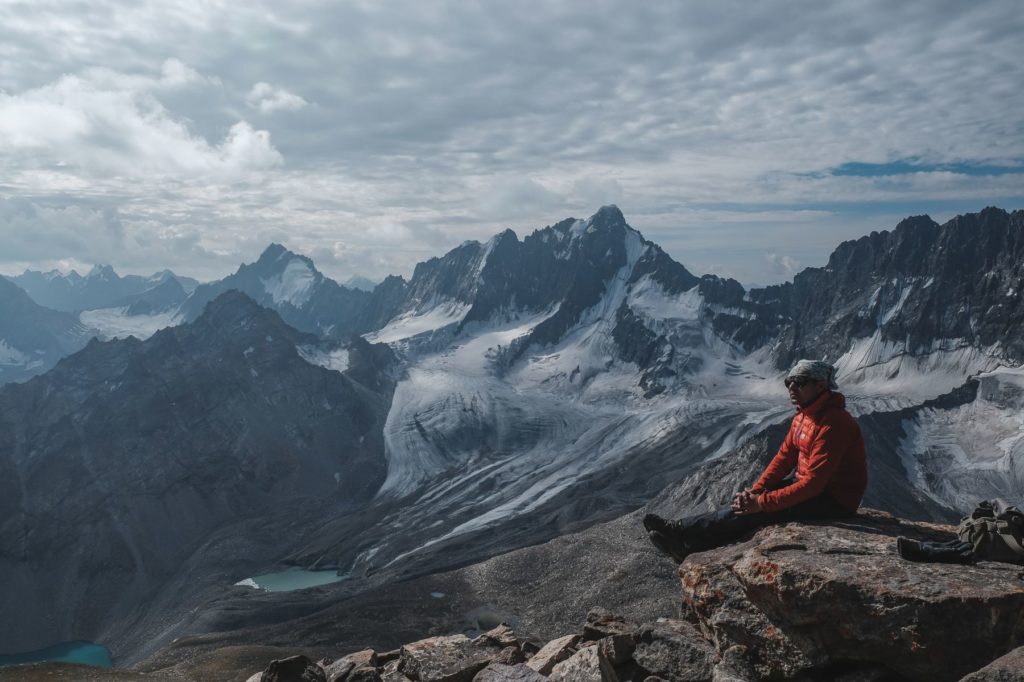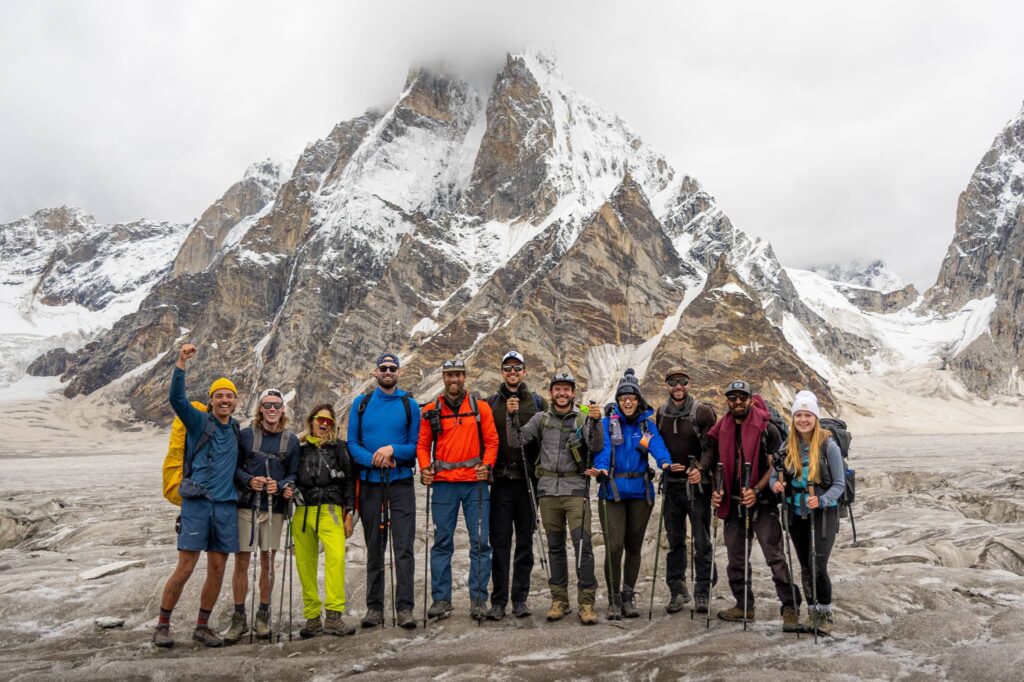We get asked these questions a lot by people: “just how difficult is the trek to K2 Base Camp?” and “how can one prepare for it?”
The journey to base camp is not always easy. There are numerous challenges along the way – the weather and rugged terrain to name a few – that need to be treated with seriousness and respect.
That being said, the trek to K2 Base Camp is still very doable and can be undertaken by anyone who has the right attitude. Like all great wilderness experiences, anything is possible with proper preparation and a healthy dose of enthusiasm.
It should go without saying that finishing the trek is also extremely rewarding. After all, this is one of the most adventurous and epic trails you’ll ever have the chance of doing.
So what do you need to do to get ready for the trek to K2 Base Camp? Read on to find out more about expectations, conditions, and necessary precautions.
What to expect
The trek to K2 Base Camp can be difficult, yes, but it’s NOT enormously difficult. Anyone with the proper gear, fitness, and mindset can do it.
What’s more important is that, despite the difficulties, the trek to K2 Base Camp is well worth the effort.
So what can you expect from this epic adventure? Consider the following.
The terrain
Aside from the first and last few days of the trip, the trek to K2 Base Camp is mostly on glacier. That means ice, sparse vegetation, and a whole lot of rocks.
Pakistan’s glaciers are unique in that most of them are covered in rubble and mountain debris. Some areas are so packed with earth that it doesn’t feel like a glacier at all. If it wasn’t for the ice blocks, tarns, and meltwater streams, you wouldn’t think you’re walking on ice at all, let alone ice that is almost 170 meters deep in places!

That being said, walking on a rubble-strewn glacier still presents some challenges. Crevasses, though not always gaping, are still present, so it’s better not to wander off. The terrain also undulates frequently, meaning that you’ll be switching between incline and decline pretty often.
Listen and follow your guides when walking on the Baltoro Glacier. They’ll know the best way to navigate around the boulders and will most often take the path of least resistance.
Gondogoro La is a proper alpine pass complete with ice and snow. Crampons/microspikes, a harness, helmet, and sling will be vital. Despite the need for this gear, no technical mountaineering experience is required to cross the pass.
The living conditions
Luckily, competent* expedition organizers will spare no expense when it comes to bringing the proper gear. Employing a combination of hearty porters and mule drivers, trip leaders will pack in as much as it takes to make the group relatively comfortable. There won’t be any lazy sofas or Netflix parties up there but we can promise you a nice lounge chair and French press in the morning at least.
Interestingly, following the installation of a SCOM tower in recent years, internet is actually a possibility now near Concorida – which is pretty mind-blowing considering how remote it is. Granted, it’s only available to SCOM users but still, that’s a hell of a development.
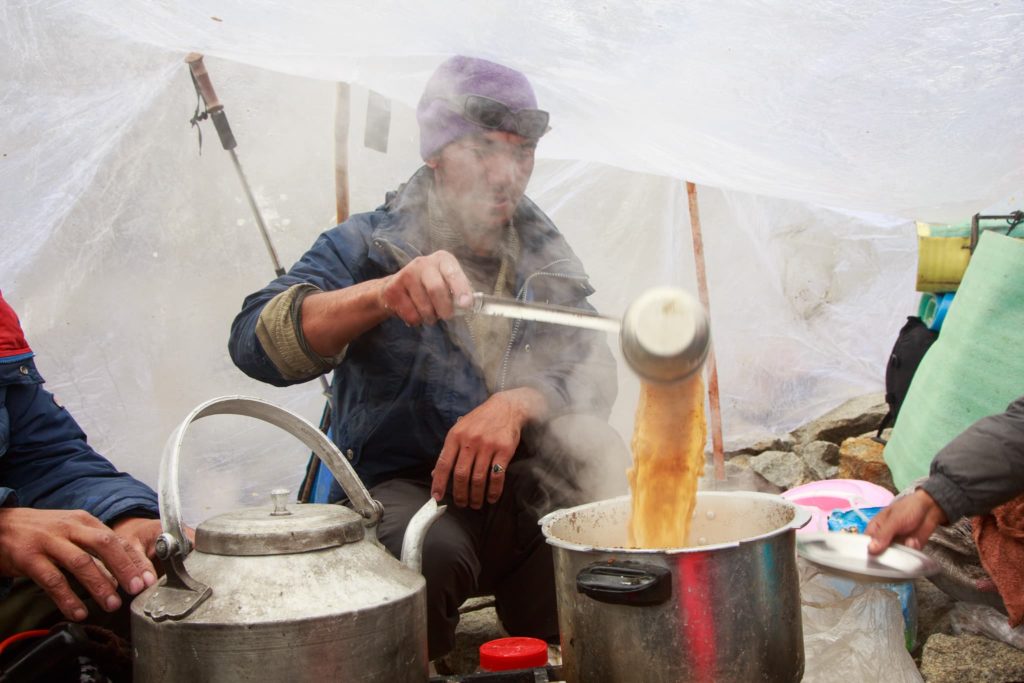
On a similar note, electricity is usually available at the camps. Well-equipped groups bring a generator with them, which can be used for lighting the camp and charging devices.
*I use the word “competent” here because competency is not always a given on these treks. Some tour organizers cut costs and skimp on camp amenities. That means less food, fewer comforts, like tables, chairs, and a toilet tent, and less overall service.
We, Epic Expeditions, DO NOT cut corners. We bring all of the necessary supplies and take great pride in our camp setups.
The distances
The total trekking distance for the entire trip is 160 km or 100 miles spread out over 10-12 days. (A few of those will be rest days, of course.)
If you follow a typical itinerary for K2 Base Camp, you should be trekking around 12-16 km (7-10 miles) per day. Some days, like the languid walk from Khoburtse Camp to Urdukas, will be shorter; others, like the downhill push from Kuisbang to Saicho, will be longer.
Expect to walk around 5-6 hours per day. Mornings will be the best time as the afternoon heat can be oppressive at times.
The weather
Weather is unpredictable on the Baltoro Glacier, even in the relatively stable summer season. Lower down, the valley can feel like a furnace at times as temperatures push 30 Celcius. Meanwhile, up at Concordia, blizzards can hit at any moment.
On our trip to K2 in 2021, we were treated to almost a foot of snow at Base Camp. On the return trek back, the thermometer swung in the other direction and some people were on the verge of heatstroke.
Point being: be ready for any kind of weather on the glacier. Sun, snow, rain, hail, dust, you name it – it’s probably a likelihood on the trek. Have the right clothing and gear to protect yourself from the elements. Here’s a complete packing list to refer to.
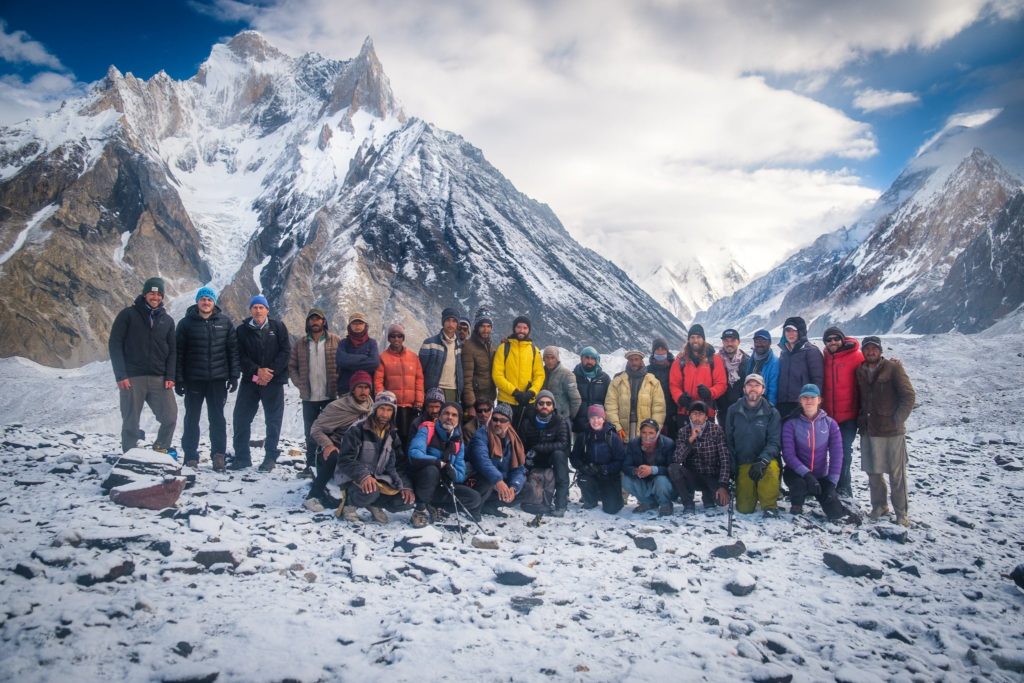
The altitude
With an average elevation of around 4300 meters, the trek to K2 Base Camp is quite high. Beyond 3500 meters, altitude-related ailments start to become more likely. What those symptoms are depends on the person.
When it comes to dealing with high altitude, there is no one cure-all. Diamox* might help your body acclimate more easily but there is no guarantee that it will eliminate altitude-related symptoms altogether.
In our experience, the best way to handle high altitude is a combination of self-care, fitness, and, most crucial, awareness. Drinking plenty of (purified) water, good sleep, eating plenty, and listening to others when they notice something wrong are all good preventative measures.
We spread the trip out in a way for maximum acclimatization and keep a close eye on everyone in the group to see if anything is awry. If altitude-related symptoms start to appear, we’ll be there to help.
*Diamox is a prescription drug that requires a doctor’s order. Epic Expeditions cannot advise on when or how much to take at any time. Please consult a healthcare professional first.
Trek to K2 Base Camp
Make sure you’re prepared
Before embarking on the trip, you’ll want to make sure you have your ducks in a row. Not just organizationally either, but physically and mentally as well.
Below are some ways that you can prepare for the trek to K2 Base Camp and maximize your chances of having an epic experience.
Physically train beforehand
Even if you won’t be doing any actual mountaineering on this trek, people still need to be in shape before embarking. The distances can be long, the terrain unforgiving, and the atmosphere thinner than you’re used to – you need to be ready and able to handle all of these.
Physically preparing yourself for the K2 Base Camp Trek is somewhat similar to what you might have done for other multi-day backpacking trips. Endurance is crucial as is strength, particularly in your legs, glutes, back, and joints. Having these will ensure that you can not only complete the day’s walk without exhaustion but also avoid unnecessary injuries like sprains.
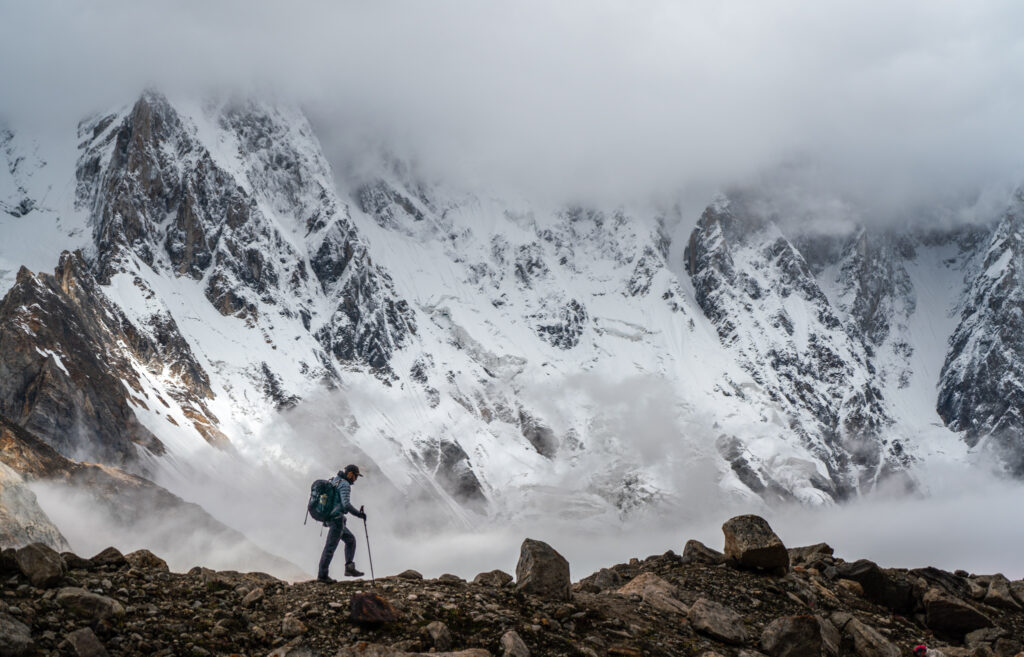
In the months leading up to your trek, try to hike as much as possible. Choose trails that have some sort of incline and take a weighted pack with you to help increase strength. Shoot for length without overtaxing yourself.
When you’re not out on the trail, do workouts that hit the key bodily areas. Squats, lunges, sleds, burpees, stairs, and anything involving a box e.g. step-ups are good exercises to start with. Don’t forget to work on your stability – with a BOSU ideally – and stretch when you’re finished as well.
Have the right gear
The Karakoram isn’t the place to skimp on equipment or settle on the cheap stuff – this is one of the most rugged mountain ranges in the world. To cope with the conditions and conquer the terrain, you’ll absolutely need the right gear.
Here are a few extra notable items (among many other mandatory ones):
- Sturdy hiking backpack – Not necessarily a large 60+ liter one since porters will be carrying a lot of your camp equipment. We recommend combining a 35-liter backpack with an expedition duffle actually.
- Trekking shoes – Keep in mind that your trekking shoes are about to take a beating and there will be short glacial river crossings. Good quality and GoreTex material are essential. DON’T bring a brand new pair without breaking them in first either, unless you want to be suffering from terrible blisters.
- 4-season sleeping bag – It gets real cold on the Baltoro Glacier, even in peak summer. Invest in a proper 4-season bag (preferably a 0-degree one) so that you can stay warm during the night and limber during the day.
- Basic climbing/glacier equipment – You will need crampons/microspikes, a climbing harness, a helmet, and accessories for the ascent and descent of Gondogoro La.
- Filtered water bottle – The water can be silty and even contaminated in places. Don’t risk the runs; purify water whenever you can.
- Layers – A down jacket, fleece, thermals, pants, base layer, shell, socks, etc, etc. Experienced trekkers know the drill by now.
These are just the TIP of the proverbial iceberg in terms of what you actually need for this trip. To see a more complete breakdown, check out our comprehensive K2 Base Camp packing list post

Be comfortable in the wilderness
Tromping around the backcountry in the remote corners of the Earth is immensely rewarding, and we are very lucky to have access to them.
But wilderness trekking comes with both pros and cons.
Yes, it’s raw, unspoiled, relatively empty, and beautiful beyond words. Without a doubt.
On the flip side, the wilderness is not always accommodating. With the isolation comes the occasional feeling of loneliness. Boredom can also set in, especially on days where there is not much walking to do.
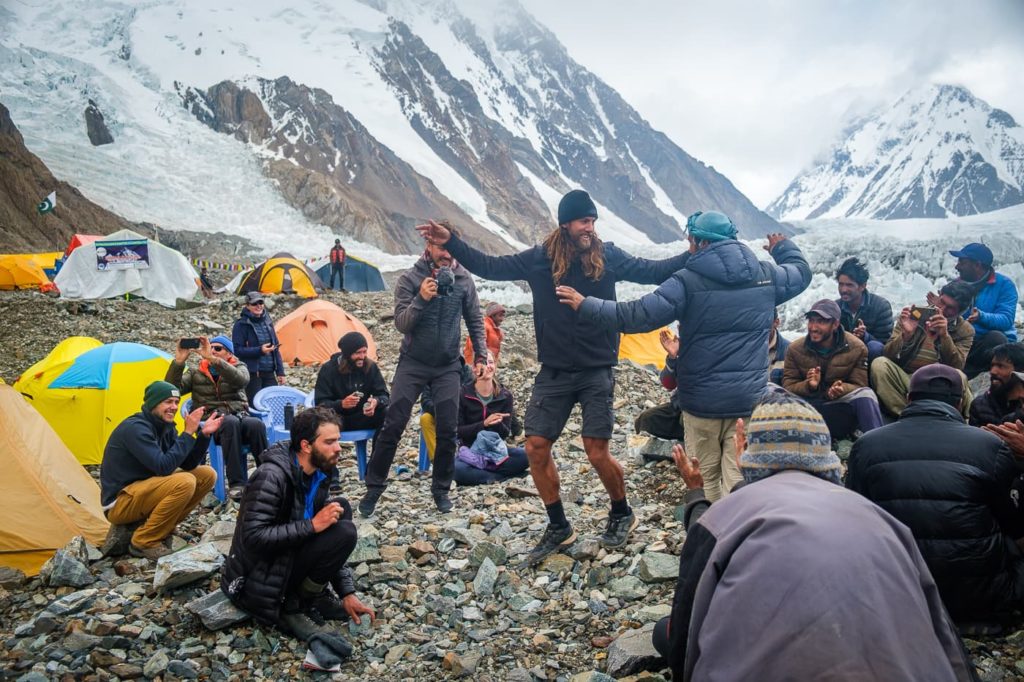
When you’re not active, it helps to have some things to kill time. A good book, journaling, cards, photography, mountain bocce, and so on. Hang out with the porters and you may even be invited to a dance party Balti-style!
Also, remember to practice ‘leave no trace’ as is our sacred duty as excursionists and backpackers. Pack your personal garbage out, avoid contaminating nature, and take only photos.
Invest in the right insurance
When trekking to K2 Base Camp, you’ll definitely need some sort of protection in the form of insurance.
The thing is, standard travel insurance just isn’t going to cut it.
For starters, many insurance plans don’t cover trekking or hiking beyond 4000 meters. A third of this trek is above that.
More importantly, though, most travel insurance doesn’t provide you with adequate emergency evacuation coverage. That means if you get hurt and have to be transported out, you could get stuck with a very hefty bill.
We recommend using Global Rescue for the trek to K2 Base Camp. These folks provide some of the best coverage in the industry in some of the most remote places in the world. Helicopter evacs are included.
Double check your documents
Because the Central Karakoram National Park lies within a restricted zone, there is a bit of bureaucracy to deal with.
Thankfully, tour operators will be handling most of the heavy lifting for you when it comes to paperwork. They’ll liaison with you to make sure everything is in order.
Have all the necessary documentation ready, including the trekking permit, passport copies, and a printout of your visa before heading out. Put everything in a safe place as well, such as a plastic envelope.
Start getting excited
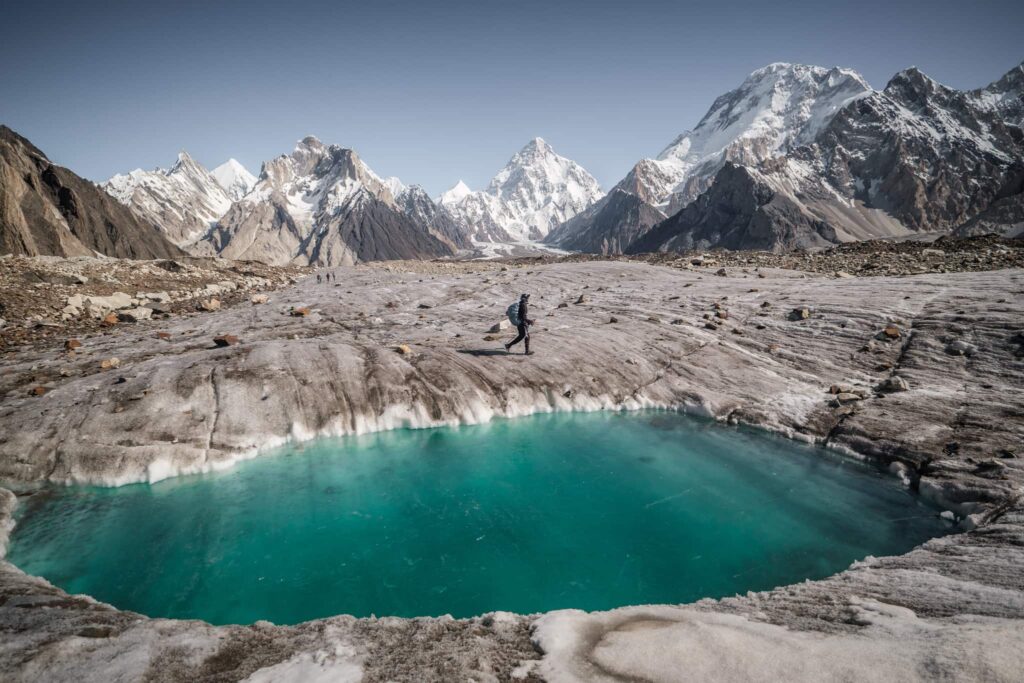
Seriously: finishing the K2 Base Camp Trek is one of the most spectacular things that you can do in a lifetime. It’s demanding, unpredictable, awe-inspiring, and surreal all at the same time.
Walking amongst giants through the Throne Room of the Gods; there’s just nothing else like it.
So prepare yourself – mentally, physically, spiritually – for the best three weeks of your life. The trek won’t be a walk in the park by any means but it will all be worth it in the end.
So if you haven’t already done so, now is the time to get PUMPED.
Still not convinced? Here are MORE reasons why this trek is amazing.
So how difficult is the K2 Base Camp Trek actually?
All things considered, we’d say that the trek to K2 Base Camp is certainly a tough trek. The terrain is rugged, the weather is unpredictable, and you’ll be miles away from civilization.
But with the right preparation beforehand and a positive attitude during the trek itself, you should have no problem making it to the end.
Just remember: the things worth having in life usually take work to get. The trek to K2 Base Camp is no different.
Interested in joining us in Pakistan this year?
You can put down a deposit to secure your place on our trip page if you are keen to get signed up.
Contact us for any trip-related questions. Hope to see you at the foot of K2 sometime soon

